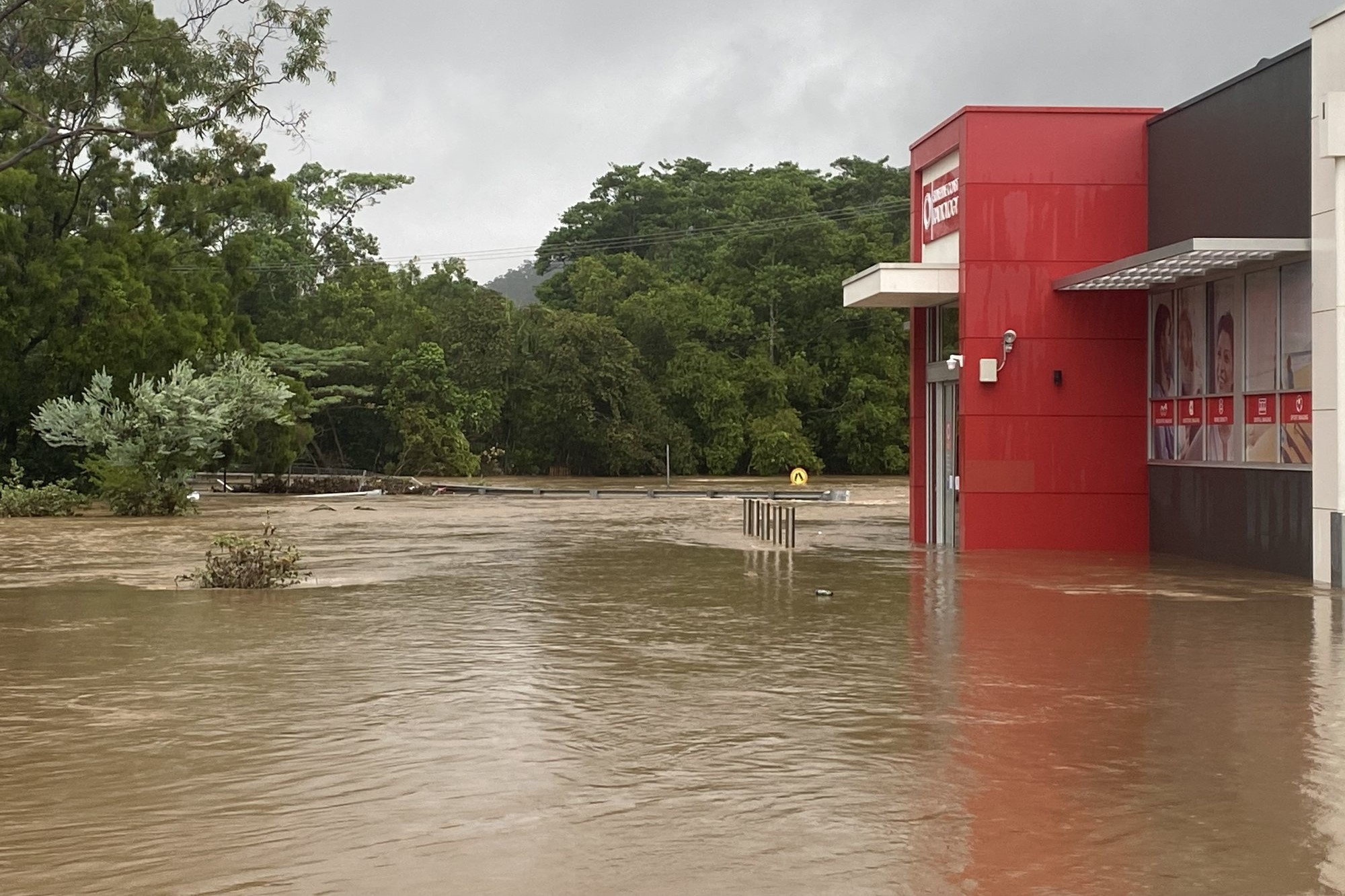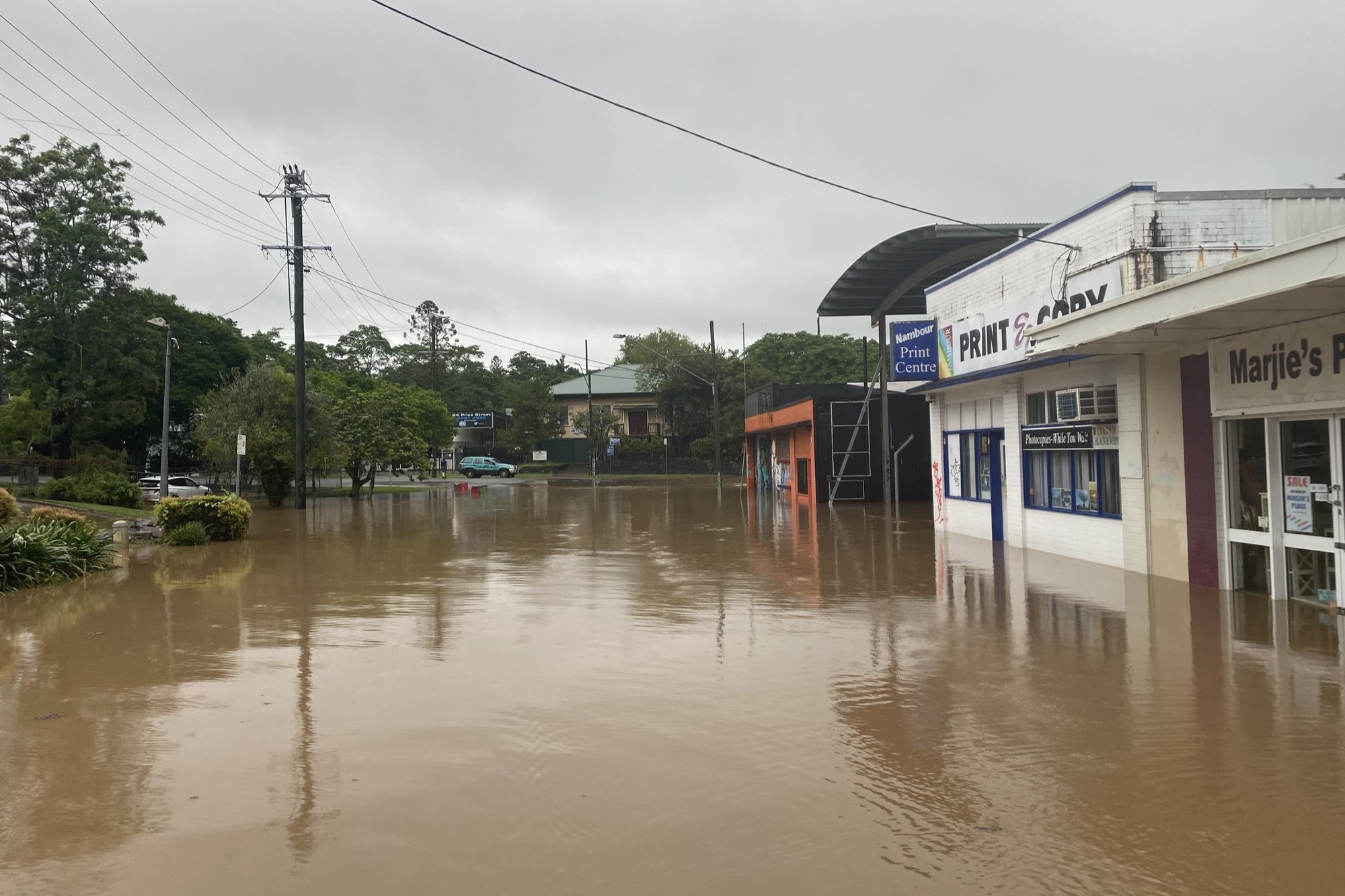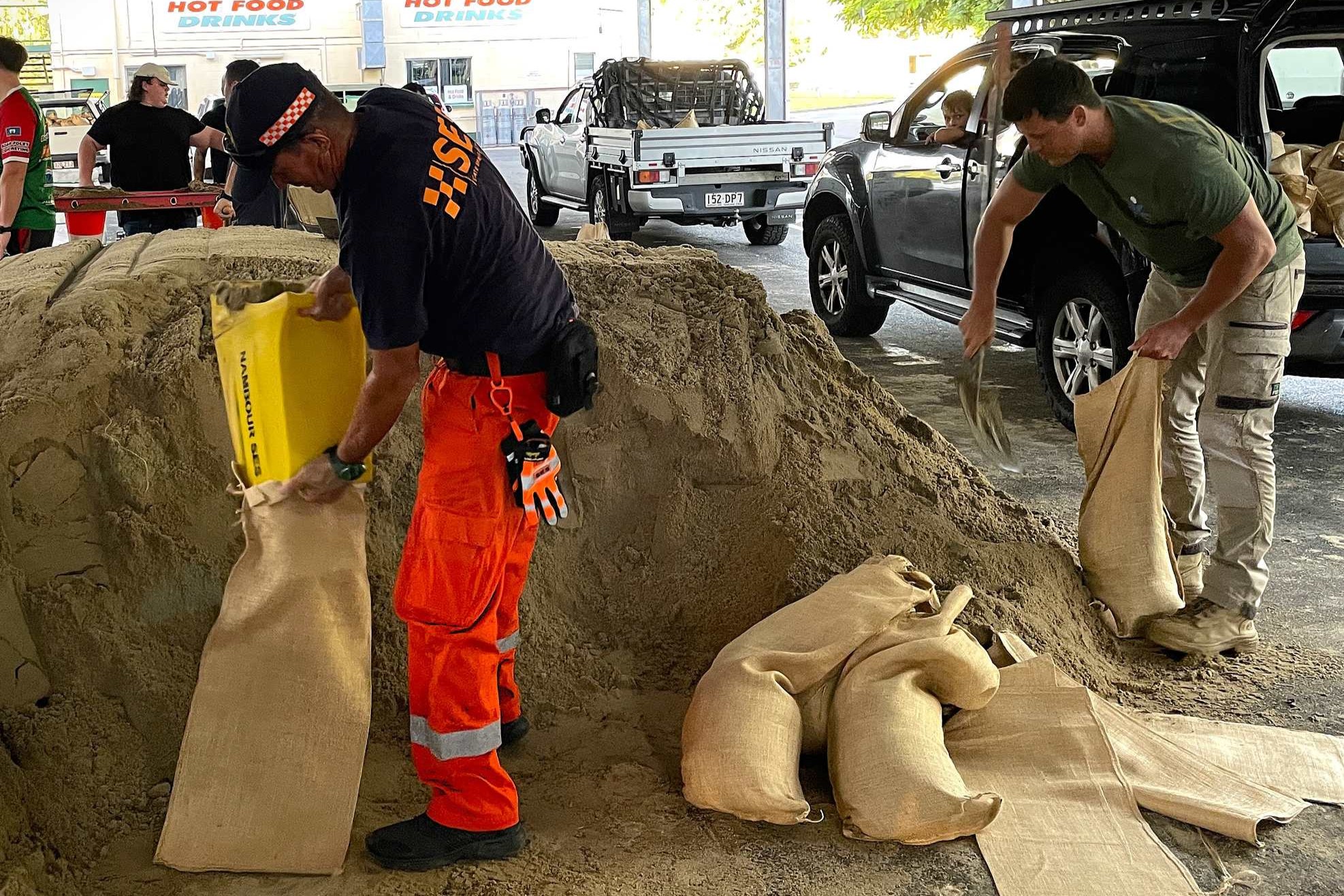A Sunshine Coast town still recovering from the effects of an ex-tropical cyclone early this year is on edge as another wet season intensifies.
Nambour was swamped by 365mm of rain on March 10, when large parts of the CBD were inundated. The event was followed by a 300mm drenching over four days, later in the month, and a 200mm soaking on April 25.
Sunshine Coast councillor David Law said the incidents rocked the hinterland town of more than 10,000 residents.
“We had three major events in quick succession across 46 days and clearly that had a big impact on businesses and some households,” he said.
“Businesses and some sporting clubs are still in the process of recovery following the flooding events.
“The major event after TC-Alfred was just below the highest level (of rain) recorded (in Nambour).
“It wouldn’t have mattered how ready you were, the water did what it did and had a significant impact through the centre of town.”
Sunshine Coast Council confirmed that about 75 businesses in the town were directly impacted from flooding and road closures and 137 businesses were more broadly affected.
It was months before some re-opened, while others relocated and some closed.
The Bureau of Meteorology has warned that there is a higher risk of severe weather than usual this coming summer.
A council spokesperson said it was important for locals to be prepared for what could be an particularly wild wet season.
“This summer we’re expecting a wetter-than-usual start, which can bring flooding and storm damage,” they said.
“As we head into the wet season, it’s a good time to think about how we can prepare.”

Two council-led information sessions were recently held in the town, as part of a Get Ready campaign, to help to prepare locals for the possibility of similar incidents in the future.
Council’s disaster management team informed residents and business owners how to compile an emergency plan and kit, detailed flood mapping was provided and representatives from James Davidson Architects shared practical ways to reduce the effects of flooding.
Councillor Law said very little can be done to prevent flooding, but businesses can take measures to mitigate the impacts.
“Some of the people I spoke to after the weather event in March said they would replace the plasterboard on their lower levels.
“The first 1 to 1.2m can be built with waterproof, resilient structures that can be washed out (after a flood) rather than removed and rebuilt.”
“Obviously, it depends on what the business is and how easy that is to do, but these are the kinds of things people can consider.
“How quickly can water get away after it comes in? How easy will it be to clean up afterwards? Is it possible to put electrical equipment above potential flood levels?
“For example, if you have a water pump or a compressor on refrigerators, put them up high so they can be easily cleaned and recovered, or so they don’t get wet if they’re electrical.”

Councillor Law said council can not do much to prevent flooding bu tit can help in the aftermath.
“For these types of events, which generally happen many years apart, you wouldn’t be able to build drains big enough to make the water go away any faster or behave differently,” he said.
“Council was very involved (last time). We mobilised as fast as we could to help people clean up, get rubbish away, reduce costs at landfill and so on.”
For more local news videos SUBSCRIBE to our YouTube channel. Just click here.
A Queensland Reconstruction Authority spokesperson said ex-TC Alfred had an estimated $1.2 billion impact on the Queensland economy, making it one of the state’s costliest recent disasters.
The state and federal governments activated Disaster Recovery Funding Arrangements (DRFA) for 18 councils, including the Sunshine Coast. Reconstruction costs for the Sunshine Coast under the DRFA are estimated at around $19 million.
Residents also received support through the Australian Government Disaster Recovery Payment and Disaster Recovery Allowance, helping those most affected and those who lost income due to the cyclone.
The Sunshine Coast was allocated $1 million through the Community Relief Fund for immediate clean-up and restoration, while longer-term recovery packages, including grants for small businesses have also been made available.

The spokesperson said the QRA conducted reconstruction monitoring in areas of the Sunshine Coast in June, and urged locals to be ready for more potential flooding.
“As we head into severe weather season, residents are encouraged to make sure their preparations are in place for severe weather,” they said.
“All Queenslanders are encouraged to head to the Get Ready Queensland website. Other great ways to prepare are to subscribe to weather alerts from the Bureau of Meteorology and Sunshine Coast Council and to visit the Sunshine Coast Council’s Disaster Dashboard for localised disaster information.”
Sunshine Coast News has reached out to some businesses for comments.





